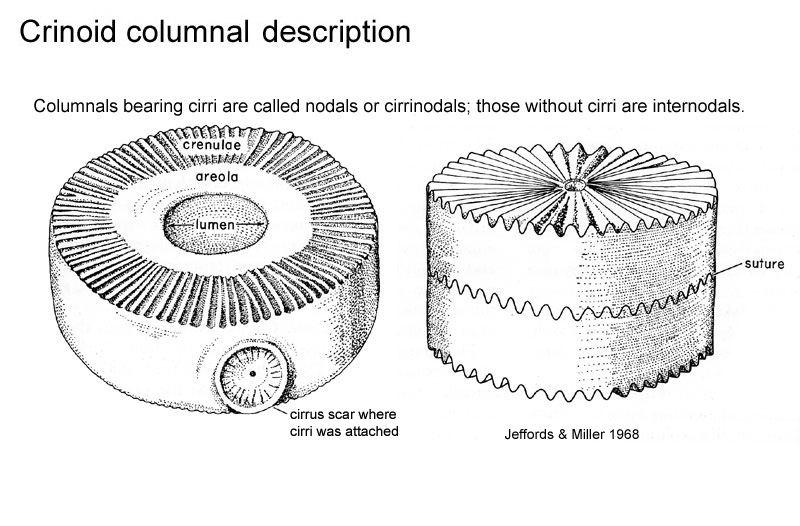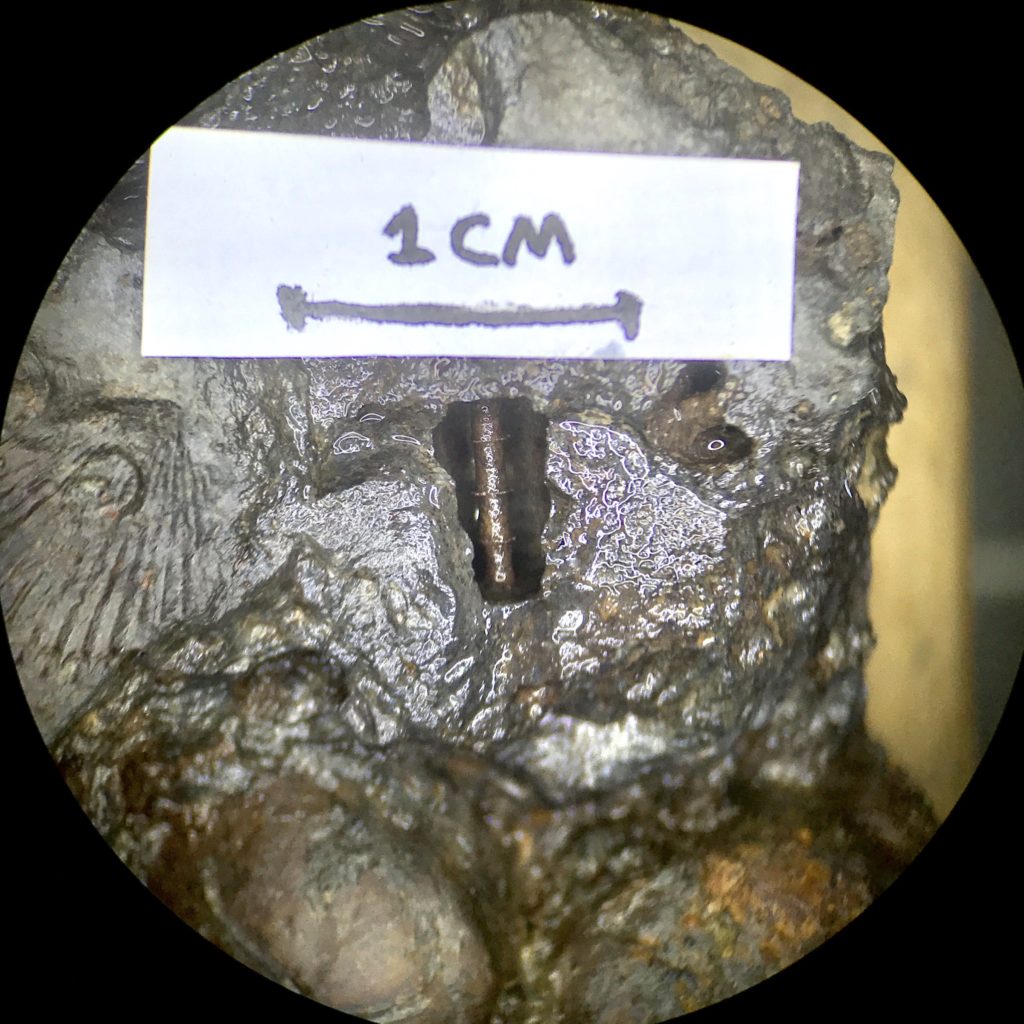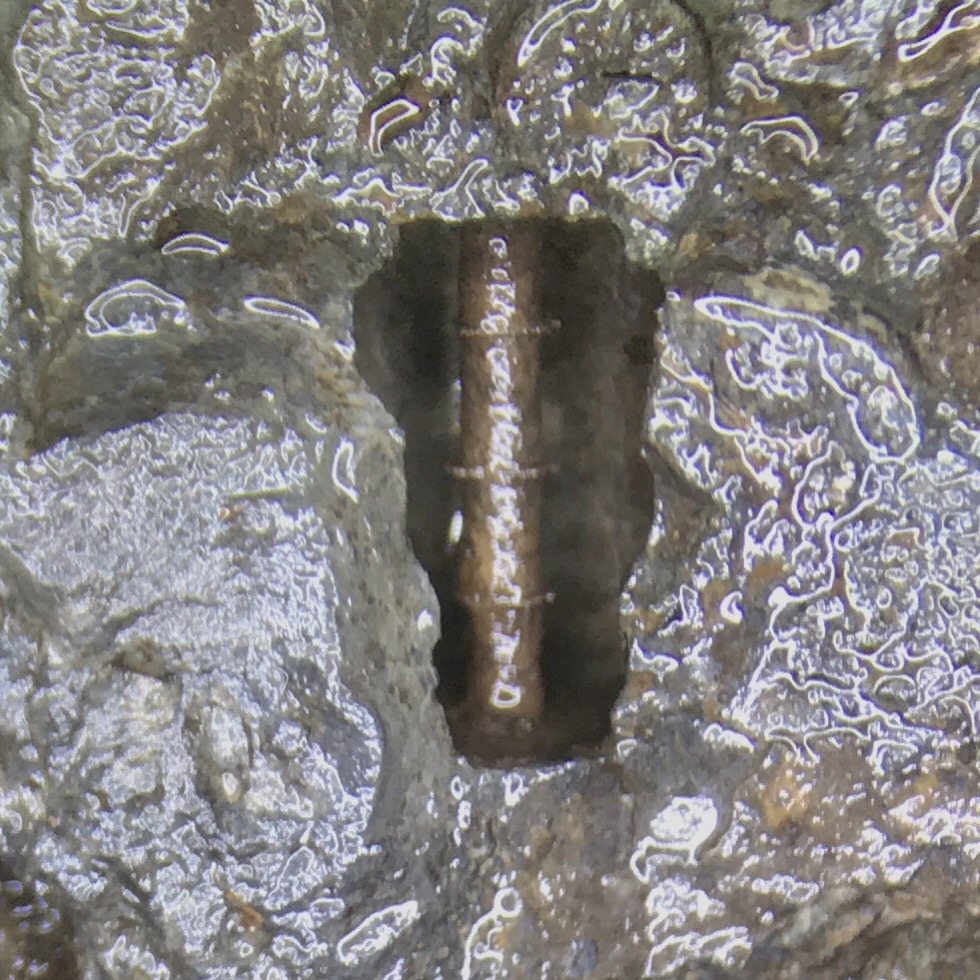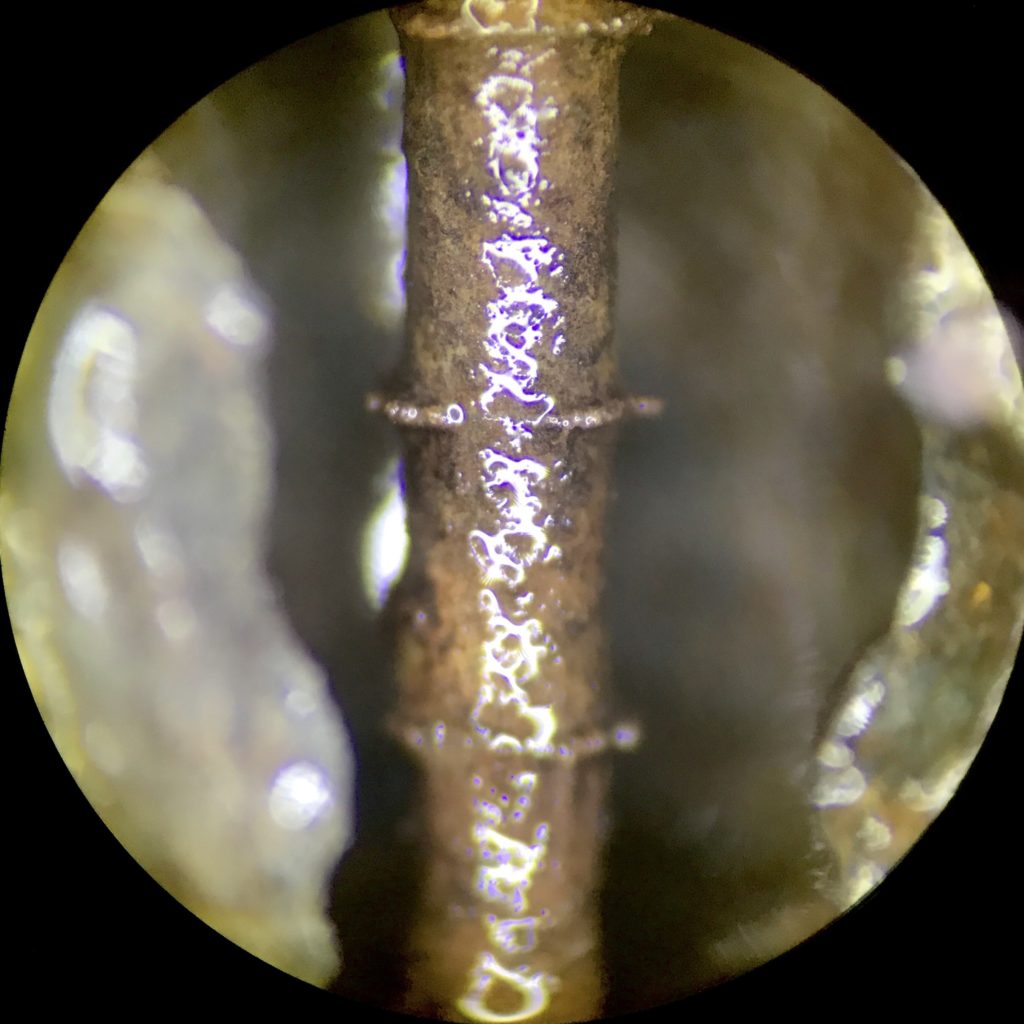Crinoid columnal fossils are very common in my digging locale. After finding a mollusc in the shale/limestone boundary above the limestone layer within the mid level shale pit, I noticed a tiny deep slot in the rock matrix. For whatever reason, the original crinoid had eroded away and only the the mold of the original fossil remains. Acidic rain water could be to blame.
The material that filled the lumen was also part of the matrix, and thus did not erode away. When digging Crinoid fossils from more wet areas, the entire fossils can turn to mud and simply wash away.
Crinoid Columnal Description
One thing I learned while researching is that the holes that appear on the sides are called cirrus scars. I once believed these were other crinoid columnal fossils fused on the side after burial.

More About Crinoid Columnals
- Crinoid Stem on Fossils of Parks Township
- Crinoid in Shell on Fossils of Parks Township
- Overview on Crinoids – The Paleontological Society [PDF]
- Crinoids – Kansas Geological Survey




